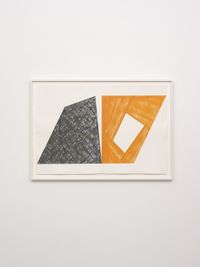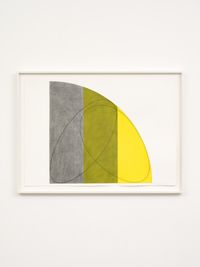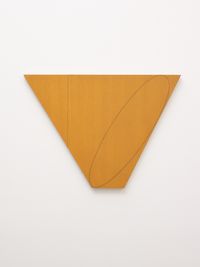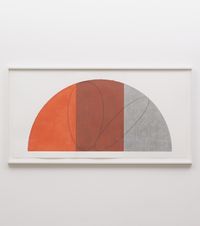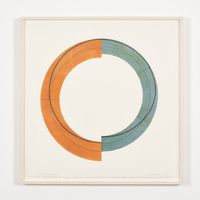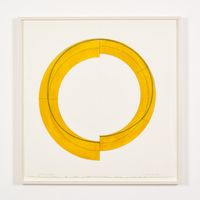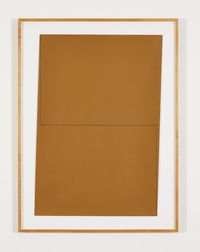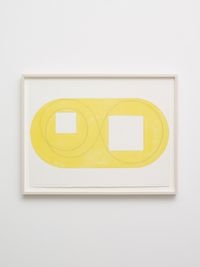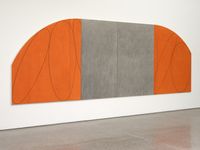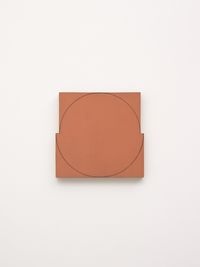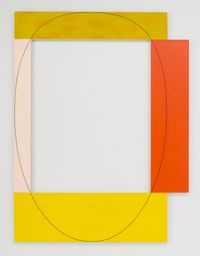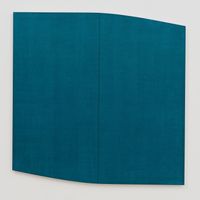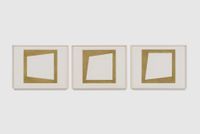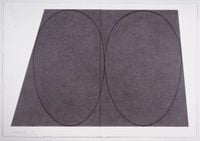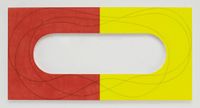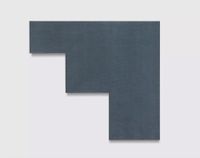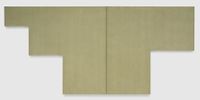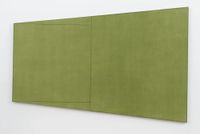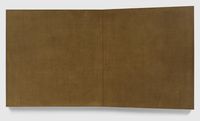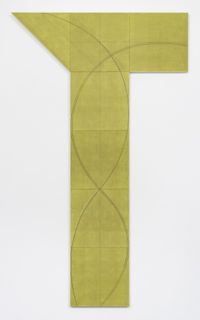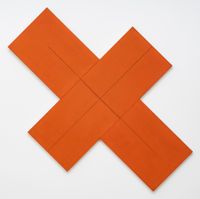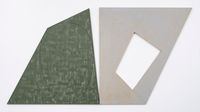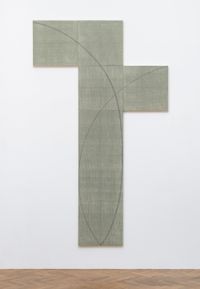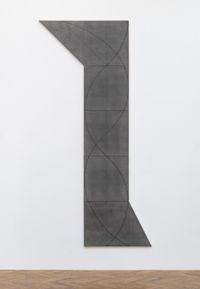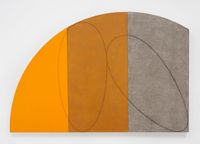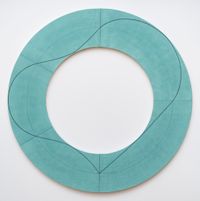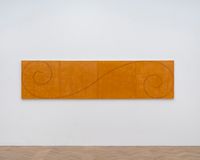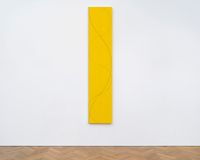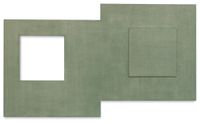Since the 1950s, Robert Mangold has employed a formal language of geometric abstraction to challenge the nature of painting. Much of his work toes the line between painted and sculptural form, drawing out thematic questions of surface, illusionism, and objecthood through asymmetrical, multi-panelled paintings.
Read MoreMangold first came to prominence through a series of Minimalist exhibitions in the mid-1960s, including the first major exhibition of Minimalist work, Primary Structures, held at the Jewish Museum, New York, in 1966.
Mangold's early paintings were made using oil paint on plywood or Masonite, including his 'Walls' and 'Areas' series of the mid-1960s, two bodies of work influenced by urban structures such as windows, walls, and buildings.
Pink Area (1965) consists of two adjoining pieces of Masonite evenly spray-painted with a dusky pink gradient, and features a small square cut out of the lower right-hand corner, revealing a plywood support below. The artwork exemplifies significant tenets of the Minimalist movement, notably the absence of any trace of the artist's hand, and acts as an early example of Mangold's focus on emphasising the picture surface to produce sculptural and architectonic effects.
By the mid-1970s, Mangold had shifted to using acrylic paint on stretched canvas, applying the paint with a roller rather than spraying it using a gun. His paintings had also begun to feature overlapping geometric shapes, whose contours are variously formed by the abutting edges of multiple panels or lines of hand-drawn graphite.
Circle In and Out of a Polygon 2 (1973) features an asymmetrical canvas with one rectangular edge and one rounded. Inside the rectangular end sits a half circle delineated by a single graphite line. Producing a visual illusion of sorts, the drawn half of the circle is completed by the round edge of the canvas, inside the perimeter of which sits further drawn lines of a polygon.
Here, the interplay between drawn lines and the physical edges blur the distinction between painting and sculpture, while also introducing another element of formal play, in which the viewer is required to mentally complete the pictured form, alluding to the Minimalist principle of a 'potentially infinite form' that extends beyond the limits of the canvas.
The early 1980s marked a move away for Mangold from a muted, pale palette, to bright, saturated colours, a shift in practice that was influential for the generation of Post-Conceptualist artists emerging at the time, which included Peter Halley.
Mangold's 'x', '+', and 'Frame' paintings of the 1980s emphasise the relationship between painting and wall, employing canvas panels in the shapes of x's, +'s, and frames that draw attention to the bare wall behind them. Again featuring hand-drawn lines of graphite carrying across their constituent panels, these series muddy the distinction between drawn and sculpted shape, and incorporate the wall into the artwork as a determining feature of their condition as paintings.
Later works continued to re-examine the thematic questions of Mangold's earlier works. Ring Image C (2008), a ring-shaped canvas framing a void at its centre, recalls the play with positive and negative space of Mangold's 'x', '+', and 'Frame' paintings. By featuring a void in place of a central image, Ring Image C confounds viewers' expectations, encouraging new ways of engaging with painting.
